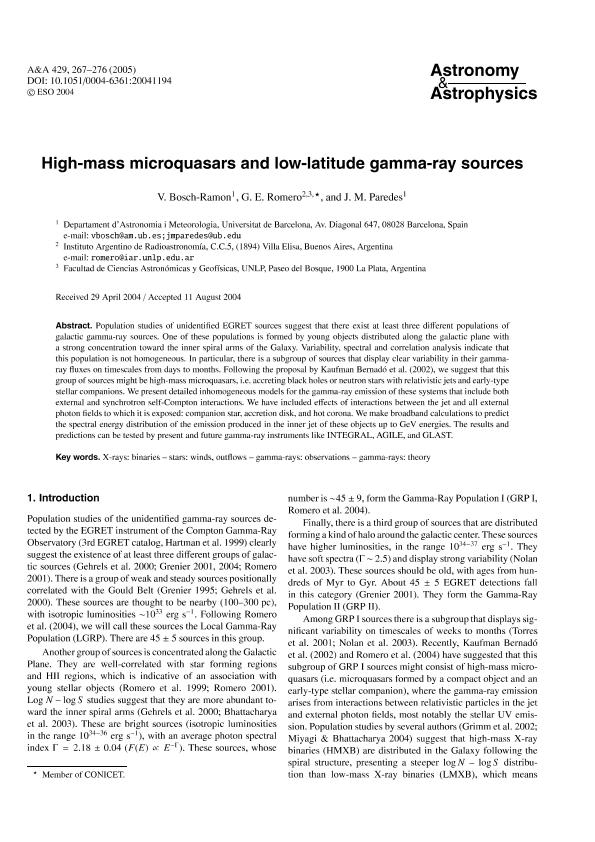Artículo
High-mass microquasars and low-latitude gamma-ray sources
Fecha de publicación:
12/2004
Editorial:
EDP Sciences
Revista:
Astronomy and Astrophysics
ISSN:
0004-6361
Idioma:
Inglés
Tipo de recurso:
Artículo publicado
Clasificación temática:
Resumen
Population studies of unidentified EGRET sources suggest that there exist at least three different populations of galactic gamma-ray sources. One of these populations is formed by young objects distributed along the galactic plane with a strong concentration toward the inner spiral arms of the Galaxy. Variability, spectral and correlation analysis indicate that this population is not homogeneous. In particular, there is a subgroup of sources that display clear variability in their gamma-ray fluxes on timescales from days to months. Following the proposal by Kaufman Bernadó et al. (2002), we suggest that this group of sources might be high-mass microquasars, i.e. accreting black holes or neutron stars with relativistic jets and early-type stellar companions. We present detailed inhomogeneous models for the gamma-ray emission of these systems that include both external and synchrotron self-Compton interactions. We have included effects of interactions between the jet and all external photon fields to which it is exposed: companion star, accretion disk, and hot corona. We make broadband calculations to predict the spectral energy distribution of the emission produced in the inner jet of these objects up to GeV energies. The results and predictions can be tested by present and future gamma-ray instruments like INTEGRAL, AGILE, and GLAST.
Palabras clave:
X Ray Binaries
,
Star Winds
,
Outflows
,
Gamma Ray Observations
,
Gamma Ray Theory
Archivos asociados
Licencia
Identificadores
Colecciones
Articulos(IAR)
Articulos de INST.ARG.DE RADIOASTRONOMIA (I)
Articulos de INST.ARG.DE RADIOASTRONOMIA (I)
Citación
Bosch Ramon, Valentí; Romero, Gustavo Esteban; Paredes, Josep Maria; High-mass microquasars and low-latitude gamma-ray sources
; EDP Sciences; Astronomy and Astrophysics; 429; 12-2004; 267-276
Compartir
Altmétricas




